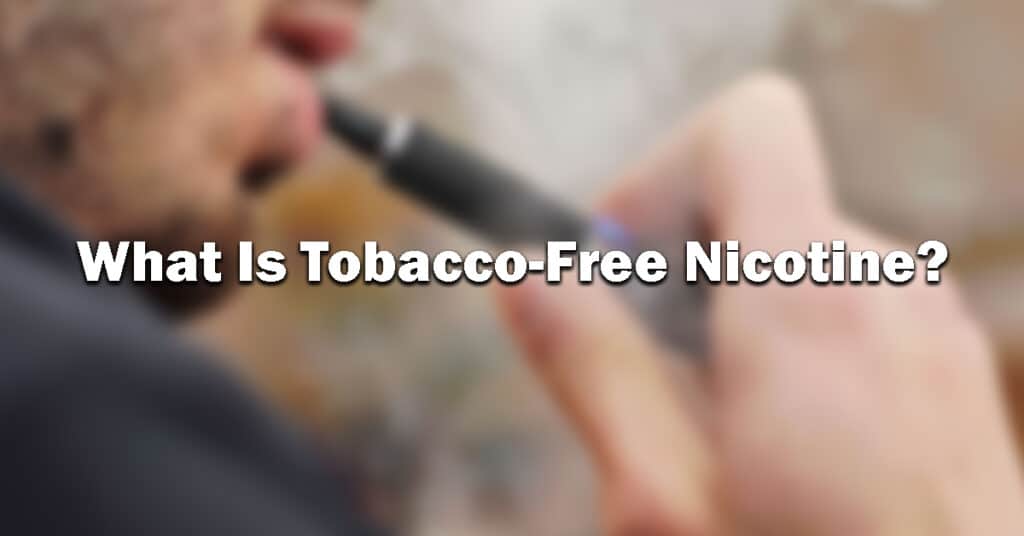RYO LifeStyle Blog
What Is Tobacco-Free Nicotine?
The use of nicotine as an addictive substance has been a part of many cultures worldwide for centuries. With the rise of tobacco-related health issues, many people have started looking for alternatives that do not involve tobacco products. One of the most popular alternatives is tobacco-free nicotine, a nicotine-based product that does not contain tobacco. This article will explore tobacco-free nicotine and how it differs from regular nicotine.
Is It Better For You
Tobacco-free nicotine is nicotine from plants that do not contain tobacco, such as peppermint, clove, and eucalyptus. It is often used in e-cigarettes, vape devices, and other smoking cessation products as an alternative to traditional cigarettes. Although it contains nicotine, it does not contain harmful chemicals or carcinogens like traditional tobacco products. This makes it a safer option for those trying to quit smoking or reduce nicotine consumption.
In addition to being safer than traditional cigarettes, some potential health benefits are associated with using tobacco-free nicotine. For example, it has been shown to help reduce stress, improve mood, and increase alertness. It may also benefit people with certain medical conditions, such as asthma and COPD, as it can help reduce inflammation and improve airway function.
Despite the potential benefits, some risks are still associated with tobacco-free nicotine. It is still highly addictive and dangerous when used in high doses. Additionally, it can be difficult to find reliable sources of tobacco-free nicotine, as it is still relatively new and unregulated. Finally, it is still unclear whether the long-term effects of using tobacco-free nicotine differ from those of traditional cigarettes.
Tobacco-free nicotine may be a safer option for those looking for an alternative to traditional cigarettes. However, it is still important to be aware of the potential risks and consult a healthcare professional before using any nicotine product. Additionally, it is important to remember that tobacco-free nicotine should not be considered a safe alternative to quitting smoking, as it is still highly addictive and can be dangerous when used in high doses.
Does It Taste The Same
The differences in the taste and smell of tobacco-free nicotine from traditional nicotine can be attributed to how the nicotine is extracted from different chemical mixtures. Tobacco-free nicotine extraction is done through a chemical process that utilizes solvents and other harsh chemicals. This process can alter the taste and smell of the nicotine, making it distinctively different from traditional nicotine.
Traditional nicotine also has a unique texture, which can be described as more smooth than tobacco-free nicotine. This is because traditional nicotine is derived from a natural source and has a more natural texture. Tobacco-free nicotine, however, has a harsher texture due to the chemical extraction process. However, some manufacturers have successfully made tobacco-free nicotine taste the same as traditional tobacco.
The flavor of tobacco-free nicotine also differs from traditional nicotine. Traditional nicotine has a mellow flavor, while tobacco-free nicotine has a harsher, more pronounced flavor. This is due to the chemical extraction process used for tobacco-free nicotine, which can strip away some of the natural flavors of the nicotine. However, most consumers cannot tell the difference on a blind taste test.
In addition to the differences in taste, smell, and texture, there are also differences in the nicotine content between tobacco-free and traditional nicotine. Traditional nicotine is usually more potent, as it is extracted from the tobacco plant and contains more nicotine per puff. Tobacco-free nicotine, on the other hand, is usually less potent, as it is derived from mixing chemicals and contains less nicotine per puff. So, tobacco-free nicotine does not taste the same as traditional nicotine. This is due to the differences in how the nicotine is extracted and the variations in the nicotine content between the two.
The popularity of Tobacco-Free Products
Tobacco-free nicotine is rising as more people turn to alternatives to traditional cigarettes and other tobacco products. But is this trend as beneficial as it seems? While it’s true that these products are nicotine-free, the label “tobacco-free” can be misleading.
First of all, many forms of nicotine do not contain tobacco. Some of the most popular include electronic cigarettes, nicotine gum, and nicotine patches. These products contain nicotine derived from various plant sources, including tobacco. So while they may be nicotine-free, they are not necessarily tobacco-free.
Second, many of these products contain chemicals and other harmful substances that can be just as dangerous as tobacco. For example, many electronic cigarettes contain propylene glycol, a chemical used in antifreeze and other industrial products, and other potentially harmful additives. The same applies to nicotine gum and patches, which may also contain other chemicals and additives. In conclusion, tobacco-free nicotine is a product made in the labs by mixing different components. It might sound healthy, but at the end of the day, nicotine is addictive and not something the human body benefits from.


